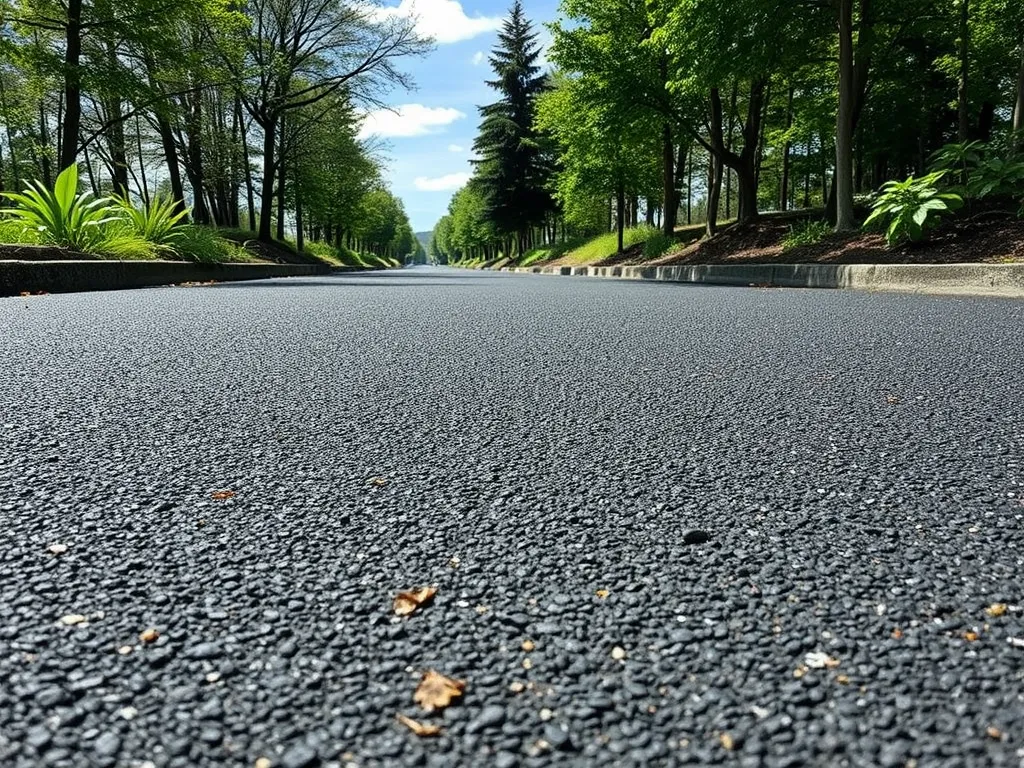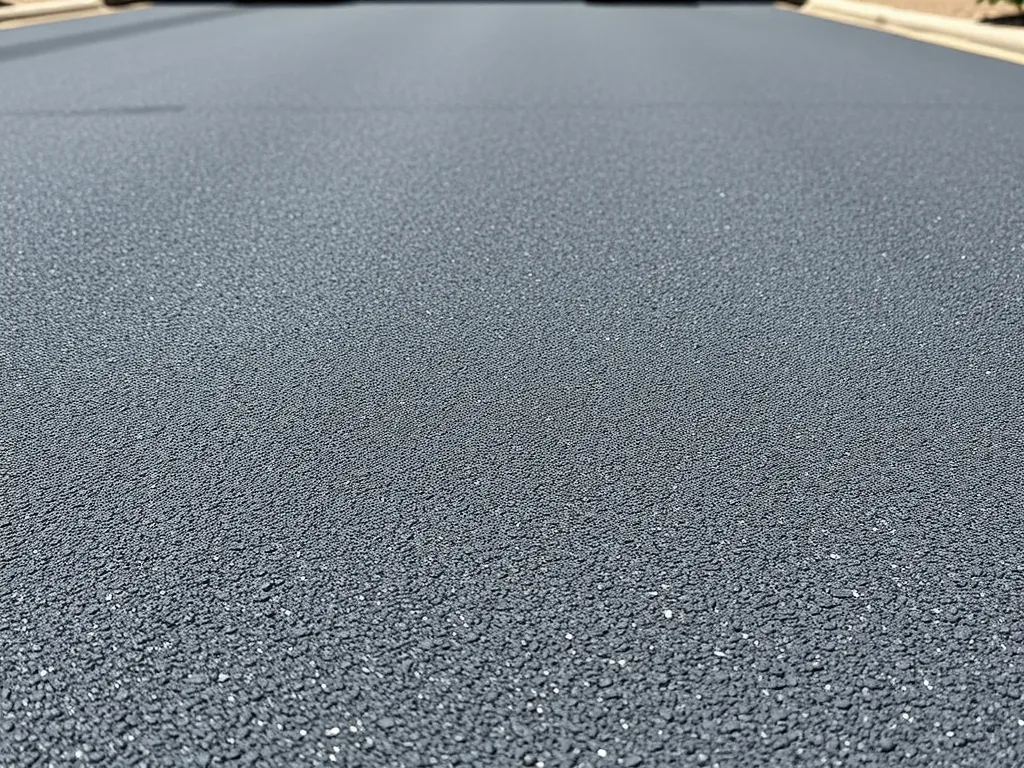Common Asphalt Maintenance Mistakes That Cost You Thousands
Published on: October 21, 2025 | Last Updated: April 14, 2025
Written By: George Voss
Common asphalt maintenance mistakes include ignoring cracks, skipping sealcoating, using DIY fixes incorrectly, and neglecting drainage. These errors speed up wear, doubling repair costs within two years. Proper care stops water infiltration, prevents raveling (surface erosion), and extends pavement life by 15-20 years. Focus on crack sealing within 48 hours, professional-grade repairs, and annual inspections to avoid major issues.
This article breaks down the top threats to asphalt, from oil spills to frost heave. Learn how to spot early damage like alligator cracking (web-like fissures) and potholes. Get cost-saving tips: reseal driveways every 2-3 years, use polymer-modified sealants, and redirect water with drainage ditches. We’ll cover repair costs per square foot, winter prep steps, and eco-friendly alternatives to harsh chemicals.
Contents
What Damages Asphalt the Most?
Asphalt breaks down fastest from weather hits and harsh chemicals. These forces eat away at the binder that holds pavement together. Spotting these risks early saves costly fixes.
Environmental and Chemical Exposure
Sun, rain, and fluids like oil wear down asphalt over time. UV rays dry out the surface. Chemicals break bonds in the binder. Both speed up cracks and holes.
Impact of Water Infiltration on Asphalt Surfaces
Water seeps into tiny cracks, freezes, and pushes pavement apart. This cycle widens gaps, leading to potholes. One freeze-thaw event can split asphalt by 0.25 inches. Seal cracks fast to block seepage.
Oil and Gasoline Spills on Driveways
Oil drips soften asphalt binder in 24 hours. Left uncleaned, spills eat into the surface, causing soft spots that crumble. Wipe spills within 48 hours using dish soap and a stiff brush. For big stains, apply a degreaser made for asphalt.
While weather and spills pose threats, repair choices matter too. Up next: key errors to avoid during asphalt upkeep.
Most Common Asphalt Maintenance Errors
Ignoring Small Cracks and Surface Damage
Small cracks under 1/4 inch might seem minor but quickly expand. Water seeps into the base layer, weakening structural integrity. This creates one of the most frequent asphalt repair problems.
How Unrepaired Cracks Lead to Raveling
Raveling occurs when aggregate particles detach from the surface. Unsealed cracks let moisture penetrate, breaking bonds between bitumen and stone. Studies show untreated cracks triple raveling risk within six months.
Tip: Seal Minor Cracks Within 48 Hours
Use rubberized crack filler for gaps under 1/2 inch. Apply when temperatures exceed 50°F for optimal adhesion. Proper sealing prevents 80% of base failures linked to asphalt maintenance mistakes.
Poor Drainage Management
Standing water accelerates pavement breakdown. Every 1% increase in moisture content reduces load-bearing capacity by 10%. Effective drainage systems prevent common asphalt issues like base erosion.
Signs of Water Pooling on Asphalt Pavement
Look for puddles lasting over 24 hours post-rain. Check for soggy edges or vegetation growth along seams. These indicate subsurface flow issues needing immediate attention.
Tip: Install Drainage Ditches Near Driveways
Slope ditches at 2% minimum grade. Position them 6-8 feet from pavement edges. Combine with French drains for high-clay soils. Proper drainage cuts water-related asphalt repair issues by 60%.
Improper DIY Repair Attempts
Homeowners often use cold patch asphalt without compaction tools. Untamped patches fail within weeks, creating tripping hazards. These asphalt paving mistakes cost 30% more in long-term repairs.
Risks of Cold Mix Asphalt Misapplication
Cold mix requires temps above 40°F for bonding. When applied in wet conditions, it won’t adhere properly. Poorly executed fixes account for 22% of driveway replacements due to asphalt repair problems.
Tip: Use Professional Crack Filling Services
Pros use hot pour sealants heated to 350°F for deep penetration. This method lasts 5x longer than DIY kits. Contractors also identify hidden issues during repairs.
Inconsistent Sealcoating Practices
Sealcoating blocks UV rays and chemicals. Skipping this step lets oxidation degrade binders. Pavement loses flexibility, leading to 40% faster crack formation.
Consequences of Delayed Asphalt Resealing
Unsealed surfaces show aggregate exposure within 18 months. Friction from tires wears down the top layer, increasing raveling risks. Delayed projects cost $0.50-$1.00 more per square foot.
Recommended Sealcoating Schedule
| Traffic Level | Reseal Frequency |
|---|---|
| Residential Driveways | Every 3 Years |
| Commercial Parking Lots | Every 2 Years |
| High-Volume Roads | Annually |
Recognizing these maintenance errors early helps property owners spot degradation signs before they escalate.
Signs Of Asphalt Degradation
Spotting early warning signs prevents minor issues from becoming major repairs. Regular inspections every 3-6 months catch problems before they escalate into costly asphalt repair issues.
How to Identify Bad Asphalt
Cracks wider than ¼ inch, faded color, or uneven surfaces signal trouble. Use a flashlight at dusk – shadows highlight dips, cracks, and asphalt paving problems invisible in daylight.
Visible Potholes and Alligator Cracking
Alligator cracks – interlocking fractures resembling reptile scales – mean base layer failure. Potholes deeper than 2 inches demand immediate asphalt repair to prevent vehicle damage. Left untreated, these common asphalt issues can triple repair costs within one freeze-thaw cycle.
Upheaval from Frost Heave or Tree Roots
Bulges over 1 inch high often stem from frozen ground pushing pavement upward or roots invading the base. Measure elevation changes with a 4-foot level – gaps exceeding ½ inch require professional asphalt driveway maintenance to avoid tripping hazards.
Repairing Common Asphalt Problems
Timely fixes extend pavement life by 5-10 years. Match repair methods to damage type – mismatched techniques worsen asphalt maintenance mistakes.
Step-by-Step Fix for Asphalt Raveling
1. Remove loose gravel with a stiff broom2. Apply tack coat emulsion at 0.05 gal/sq yard3. Compact hot mix asphalt at 300°F within 15 minutes4. Seal edges with polymer-modified sealant. This stops aggregate loss in 98% of cases when using PG 64-22 binders.
Solutions for Driveway Upheaval
Cut out damaged sections with a concrete saw. Excavate 12-18 inches below pavement to remove roots or frost-affected soil. Replace with crushed limestone base compacted in 4-inch lifts. Repairs cost $3-$7 per square foot but prevent recurring asphalt mistakes driveway owners face.
Recognizing these red flags prepares you for proactive care. Next, let’s examine how environmental factors accelerate pavement wear when protective measures are ignored.
Also See: Asphalt Vs Concrete Maintenance Comparisons: What to Know
Environmental Protection Measures
Protect asphalt by tackling threats from harsh chemicals. Simple steps save surfaces and support eco-systems.
Preventing Chemical Damage to Asphalt
Gas, oil, and de-icing salts eat through asphalt binder. Fix spills fast to avoid soft spots and cracks.
Safe Disposal of Automotive Fluids
One quart of oil can stain 50 sq ft of pavement. Use drip pans and store fluids in sealed jars. Drop used oil at centers with EPA-certified tanks – most accept up to 5 gallons free.
Eco-Friendly Sealant Options
Coal tar-free sealants cut toxic runoff by 90%. Try soy-based or bio binders with 250+°F heat tolerance. Costs run 10-20% more but last 3-5 years vs 2-3 for standard mixes.
Smart care keeps pavement strong. Now let’s tackle frequent questions about asphalt upkeep.

FAQ: Asphalt Maintenance Mistakes
What is the Most Common Cause Of Pavement Failure?
The most common cause of pavement failure is poor drainage. When water accumulates under the asphalt, it can weaken the base and lead to cracking and surface deterioration.
How Can You Tell if Asphalt Needs Replacement?
Signs that asphalt needs replacement include extensive cracking, raveling, deep potholes, and significant surface upheaval. If repairs exceed 30% of the total surface area, replacement is often more cost-effective.
What Are Signs Of Poor Asphalt Installation?
Signs of poor asphalt installation include uneven surfaces, visible seams, premature cracking, and poor drainage. If the asphalt shows signs of wear shortly after installation, it may indicate that inadequate practices were used during application.
How Often Should Driveways Be Sealcoated?
Driveways should be sealcoated every 2 to 3 years for residential properties, and every 1 to 2 years for commercial areas or high-traffic surfaces. Regular sealcoating helps protect against UV damage and chemical spills.

Closing Thoughts
Asphalt maintenance is crucial for extending the lifespan of your pavement. Avoiding common mistakes—like ignoring small cracks, failing to manage drainage, and inconsistent sealcoating—will save you time and money in the long run.
Regular inspections and prompt repairs are essential. Be proactive and tackle issues before they escalate. Understanding how to properly maintain and repair asphalt surfaces can result in a smoother, longer-lasting driveway or parking lot.
For more insights and calculation tools tailored to your asphalt needs, visit Asphalt Calculator USA.
Additional Resources for You:
- National Asphalt Pavement Association (NAPA, Industry Reports & Best Practices)
- 5 Common Mistakes to Avoid When Installing an Asphalt Driveway | Buck Bros
- 5 Common Mistakes You Should Avoid During Asphalt Paving
- 4 Easy Steps to Asphalt Maintenance
- Don’t Be At Fault: 7 Common Asphalt Paving Mistakes To Look Out For and Avoid – Perrin Construction


